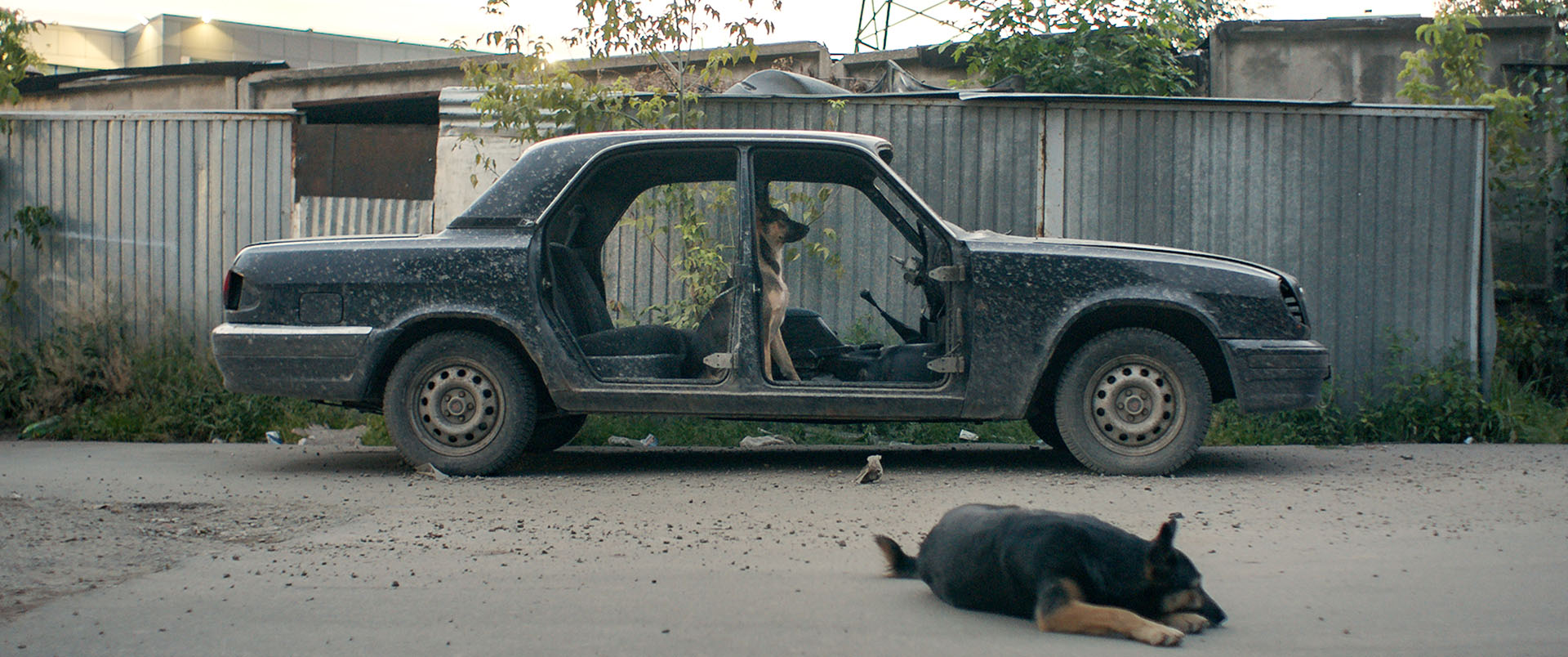Legend has it that when Laika died on November 3, 1957, following a 5-hour journey that turned the dog into the first living creature to orbit the Earth, her spirit returned to Moscow, roaming the streets where Soviet scientists had plucked her. Elsa Kremser and Levin Peter’s entrancing Space Dogs begins where the legend ends, and hangs in that same mystic region all through its hour and a half. It’s an odyssey that keeps seesawing between the terrestrial and the astral, trailing behind a couple of Muscovite mongrels to connect their earthly meanderings with a larger question about the ways in which humans have colonized space, and recruited other species as martyrs in the pursuit.
For Laika and her fellow non-human cosmonauts entered the Space Race under the double guise of lab animals and heroes – and the dialectic serves as Space Dogs’ cornerstone. Competition for the Soviet canine space program was fierce, and the aspiring candidates had to meet three criteria: they had to be brave, obedient, and beautiful (“so that they could personify the enchantment of our heroic travelers,” Russian actor Alexey Serebryakov reminds us in voiceover). But while the two mutts Kremser and Peter single out certainly are photogenic (the older one, “Limpy,” hobbles through the frame with the proud gait of a dethroned monarch, and the younger one, a bundle of unhinged energy, makes for a perfect counterpart), Space Dogs works opposite to the Soviet diktat.
This is an anti-animal movie, Kremser and Peter told me as we spoke about Space Dogs at the Tallinn Black Nights Film Festival, where the documentary screened a few months after its Locarno world premiere. Indeed, much of the film’s subversiveness lies in its commitment to steer clear from the anthropocentric gaze of so many animal tales that came before it. This is not a documentary that seeks to humanize its four-legged protagonists, but one whose overarching goal is to usher us into a world seen entirely through their own point of view.
Put otherwise, it’s a film of dogs, by dogs. Visually, it embraces what feels like a canine grammar: Yunus Roy Imer’s camerawork (very possibly the film’s MVP) lingers at dog’s eye level all throughout it, and the result is at once humbling (reiterating the primacy of the animals’ perspective over ours) and stupefying. Mere inches away from the dogs’ noses, the lens feels so close to and in synch with its subjects it ends up moving like them, running and chasing after smells and noises. Kremser and Peter spent six months walking around the outskirts of Moscow with their two leads, and the feeling of intimacy percolates through the film, narrowing the gap between dogs and audience to an almost disturbing extent.
That’s the perturbing beauty of Space Dogs: as a cinema vérité-like study of the lives of two stray mongrels, it conjures an unflinching and all too vivid portrait that vaults from moments of tenderness to scenes of unspeakable violence. Walking into my screening, I already knew I would have to brace for an atrociously long and violent single take featuring one of the mongrels and a helpless kitten. Those who’d seen the film in Locarno had told me the scene would be almost unbearably horrific, but haunting as it was, it also seemed to fall in line with the film’s overall mission: to pay justice to its animal subjects by treating them as such, rejecting any man-made filters that would have turned the documentary into a sanitized and far less incisive ethnography.
And yet Space Dogs is a lot more than a journal-like report on two dogs strolling around a city. Even as the lens stays grounded, the film keeps glancing skyward, intercutting its present-day images with archival footage of the first experiments with animal cosmonauts. There are dogs, of course, but also other illustrious non-canine travelers. We meet Ham, the three-year-old chimp sent into space by the States in 1961, and see glimpses of the first earthlings to journey around the moon––two Russian steppe tortoises. It’s a dance between Earth and cosmos where images of the film’s Muscovite lead jostle with black-and-white footage of their ancestors, canine or otherwise, plugged to needles and oxygen masks, and breath-taking vistas from outer space. And it’s through that dance that Space Dogs arrives at its haunting, final lesson: that the distance between us and the universe is no larger, and no less mystifying, than the gap that separates us from other earthlings. It’s an exercise in empathy––and a spellbinding one at that.
Space Dogs opens in Alamo Drafthouse and Laemmle Theatres’ Virtual Cinemas and will expand wider on Friday, September 18.

